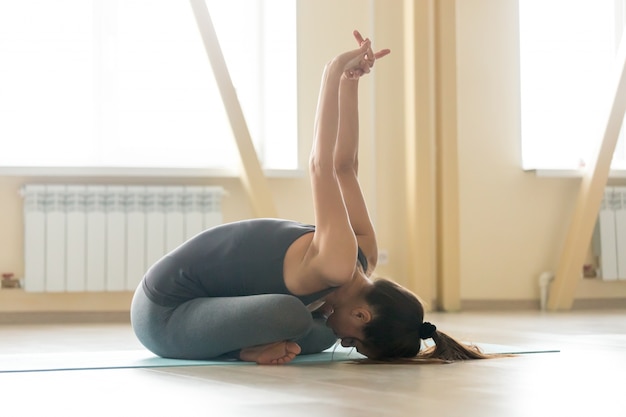
A yoga body isn’t just about being flexible—this ancient practice can also boost memory, heart, and bone health, according to Anna Magee.
Brits are currently spending a substantial £790 million annually on yoga-related expenses. While yoga seems to be getting more exotic with rage yoga, paddleboard poses, and even dog yoga, its real benefits are increasingly validated by scientific research.
Researchers at UCLA discovered that a three-month yoga and meditation course was more effective than memory exercises in reducing age-related brain impairment. Another study found it improved sleep for breast cancer survivors.
Lucy Edge, a former advertising executive, experienced relief from depression through yoga instead of using prescribed antidepressants. She took a six-month career break to study yoga in India, returning happier and more content than before. Lucy has since written three books about yoga and started Yoga Meds, a section on her website highlighting over 300 clinical trials on yoga’s benefits for various health issues like arthritis, insomnia, and obesity.
Here are some ways yoga could enhance your health and how you can get started:
If your memory training has only included crossword puzzles and Sudoku, yoga might be a better alternative. UCLA research involving brain scans and memory tests showed that a 12-week yoga and meditation course delivered superior improvements in spatial and visual memory, reduced depression and anxiety, and increased stress resilience compared to traditional memory exercises. The study participants did one hour of Kundalini yoga weekly, incorporating breathing, meditation, and mantras, and 20 minutes daily of Kirtan Kriya, which includes chanting, hand movements, and visualizing light.
For heart health, research published in the European Journal of Preventative Cardiology in 2014 indicated that yoga could lower heart disease risk as effectively as conventional exercises like brisk walking. Yoga reduces stress, which can elevate blood pressure and heart rate, thus lowering the risk of heart disease. Practicing yoga has shown improvements in blood pressure, cholesterol, and weight—key risk factors for heart disease.
Charlotte Watts, a yoga teacher and nutritional therapist, created a stress-reducing yoga series for beginners, outlined in her book “The De-Stress Effect.” Anna Ashby, a senior teacher at Triyoga Studios in London, recommends Restorative yoga for stress reduction, which features postures supported by bolsters and cushions held for up to 12 minutes to give the nervous system a break.
Musculoskeletal physiotherapist and yoga teacher Sarah Shone integrated yoga classes into the Primary Care Trust’s rehabilitation program for back pain, with 87% of participants reporting pain reduction. Yoga is recommended by the National Institute of Clinical Excellence for lower back pain. It also strengthens pelvic floor muscles and increases bone density, making it beneficial against incontinence.
For those new to yoga, starting with a gentle style like Hatha or Iyengar is advised. Inform your teacher of any health issues and, if suffering from specific conditions like back pain, consult your doctor about a subsidized yoga course under the exercise referral scheme.
Choosing the right yoga mat is essential for a comfortable practice. Consider where your mat will be kept, its weight for portability, your height, and the mat’s thickness to protect your joints. Healthista recommends the Elephant Cork Yoga mat from Valka Yoga as a durable, eco-friendly option with a 3mm thickness for joint support. It is antimicrobial and odor-resistant, ideal for those who sweat during yoga.
For added stability in poses, a yoga block like Valka’s matching elephant design block can be beneficial. Though heavier than foam blocks, cork blocks provide better grip and stability.
Ready to start or enhance your yoga practice? Consider these styles to match your preference:
– Yin or Restorative yoga: Gentle classes under candlelight with blankets, cushions, and bolsters.
– Vinyasa Flow: Energetic classes linking postures to breath in a dance-like sequence.
– Iyengar yoga: Precision-focused, holding poses up to 20 breaths with props for better alignment.
– Anusara yoga: Modern, alignment-focused with flowing movements often set to music.
– Yoga Therapy: Specific yoga to help heal injuries or illnesses with trained instructors.




